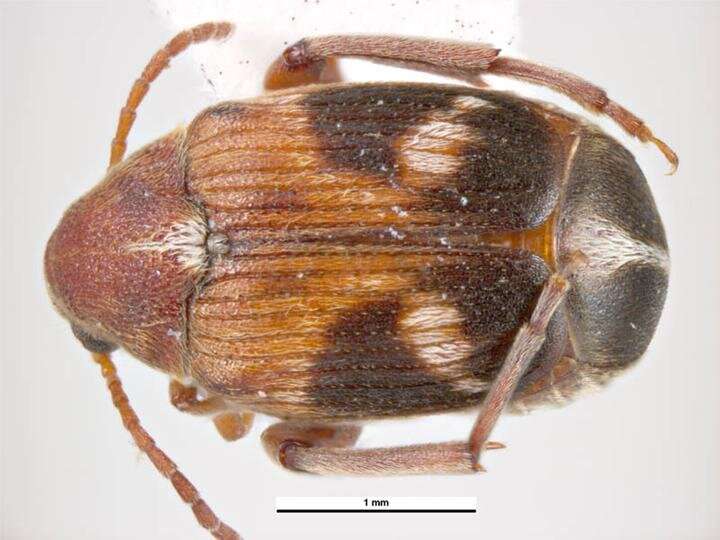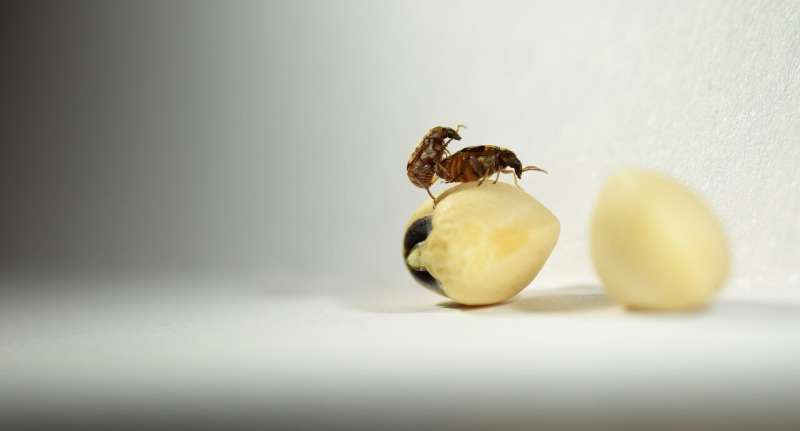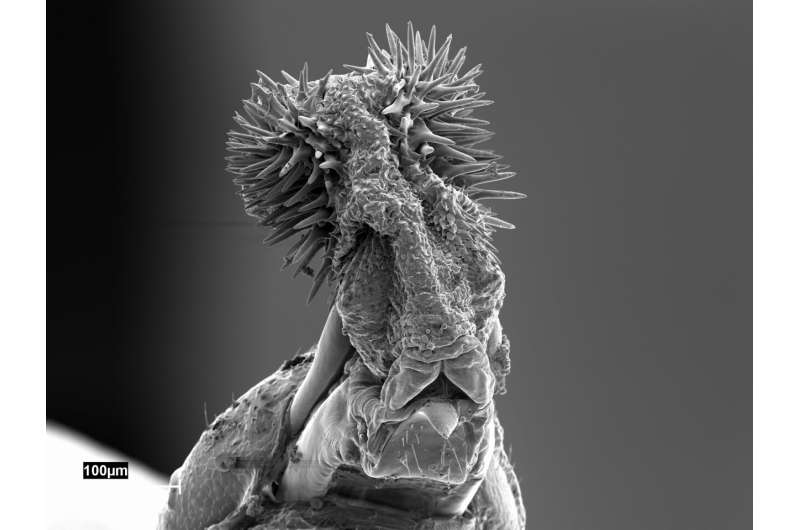Credit: Simon Hinkley & Ken Walker, Museum Victoria, CC BY 3.0 au
A team of researchers from Uppsala University, the University of Cincinnati and the University of Toronto has found that there are benefits for female seed beetles mating with males with extra-long spiny genitalia. In their paper published in Proceedings of the Royal Society B, the group describes their study of the mating habits of the beetles and what they learned about them.
Prior research has shown that female seed beetles suffer physical harm during mating—this is because the males have long spiny genitalia. During copulation, the spikes poke holes in the female reproductive tract. Prior research has also shown that males with longer genital spines tend to sire more offspring—which it has been assumed is why females allow males with more harmful genitalia to mate with them. But, it turns out, there are more reasons, as the researchers discovered during their study.
In watching the beetles mate and in monitoring the offspring that resulted, the researchers found that the females may not be quite as harmed as had been believed. The researchers found that they have developed an ultrathick reproductive tract and a very strong immune system that prevents infections in the wounds that occur.
The researchers found that females who mated with males with longer spikes produced male offspring with longer spikes and female offspring that were bigger and laid more eggs. They also found that females who mated with males with longer spiked genitalia produced more eggs over the course of their lifetime than females who mated with short-spiked males. The reason for this lies in the shape of the spiky genitalia—the longer length allowed for better access to the female's hemolymph, which helped prime her body for better reproduction.
-
Mating in the seed beetle (Callosobruchus maculatus) causes damage to the females' reproductive tract from the males' spiny genital structures, but the spiniest males also have the healthiest offspring. Credit: Julian Baur
-
In the seed beetle (Callosobruchus maculatus), the male has a spiny genital structure that enhances its reproductive success. Credit: Johanna Rönn
The researchers also found that males with longer spikes produced better quality ejaculate—it had material in it that served to enhance egg production in the female. Some of it also provided a nutritional supplement for the female, which came in handy as adult seed beetles cease eating when they reach reproductive age.
More information: Göran Arnqvist et al, Direct and indirect effects of male genital elaboration in female seed beetles, Proceedings of the Royal Society B: Biological Sciences (2021). DOI: 10.1098/rspb.2021.1068
Journal information: Proceedings of the Royal Society B
© 2021 Science X Network

























